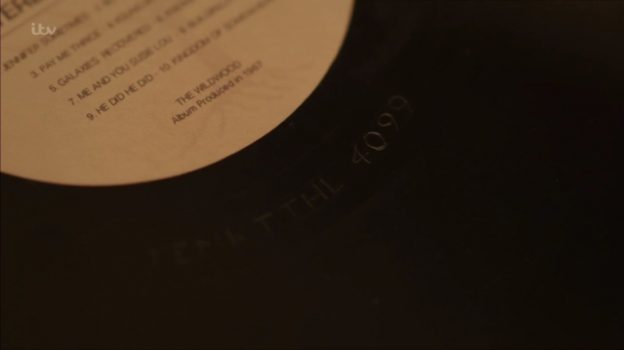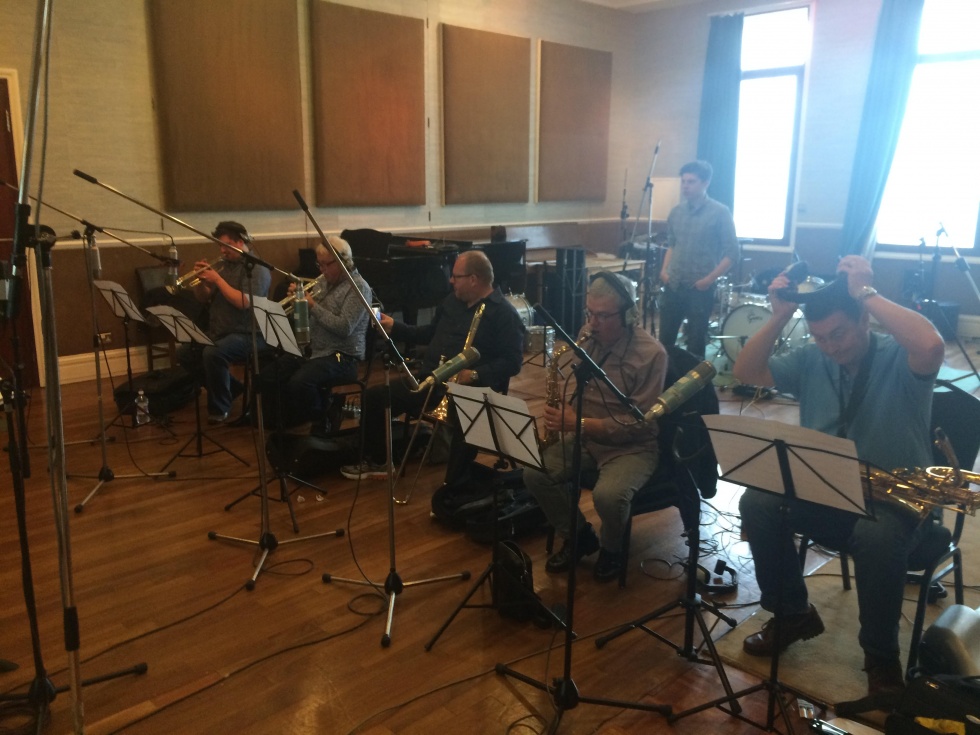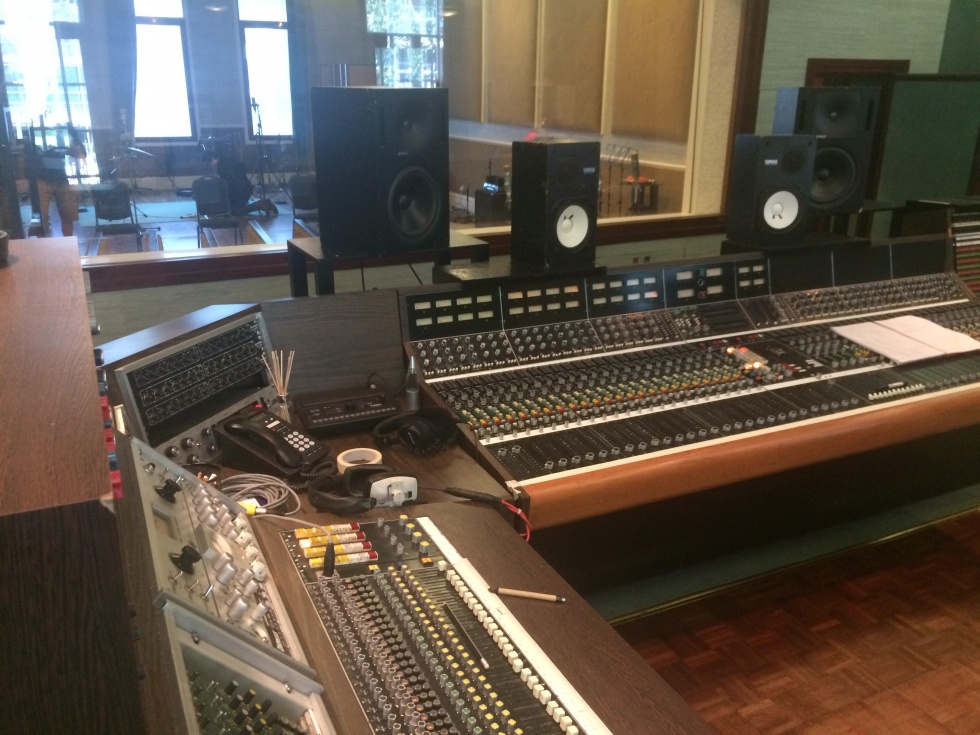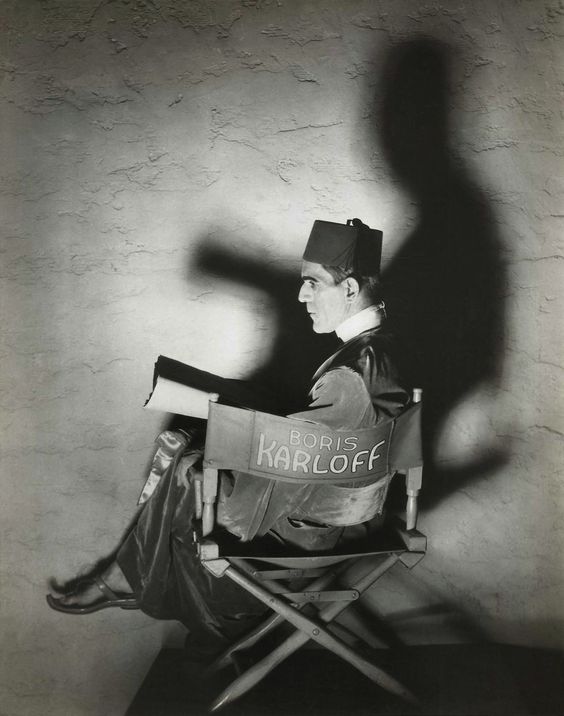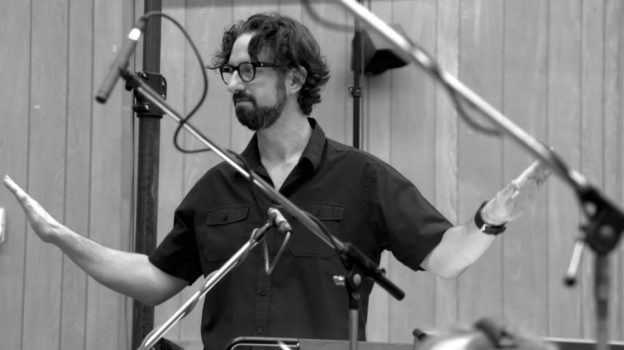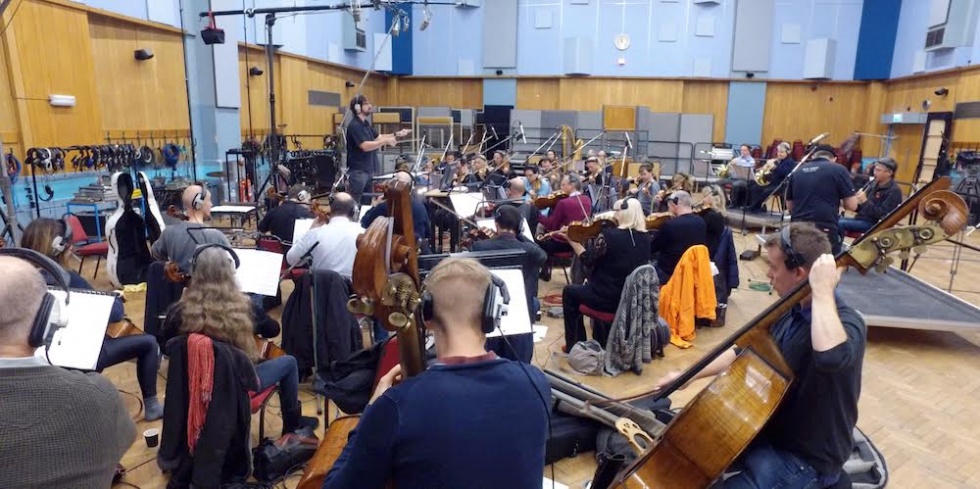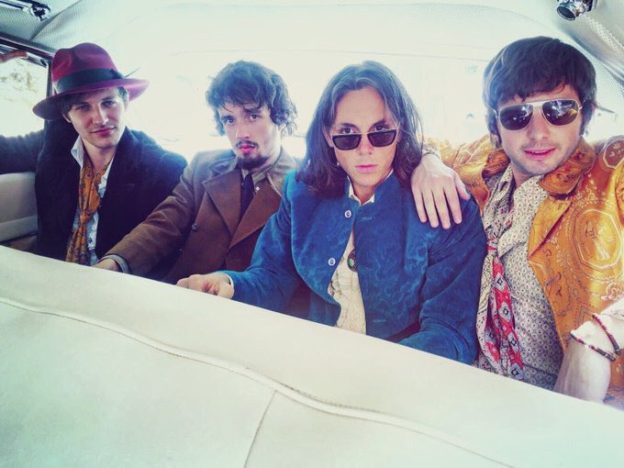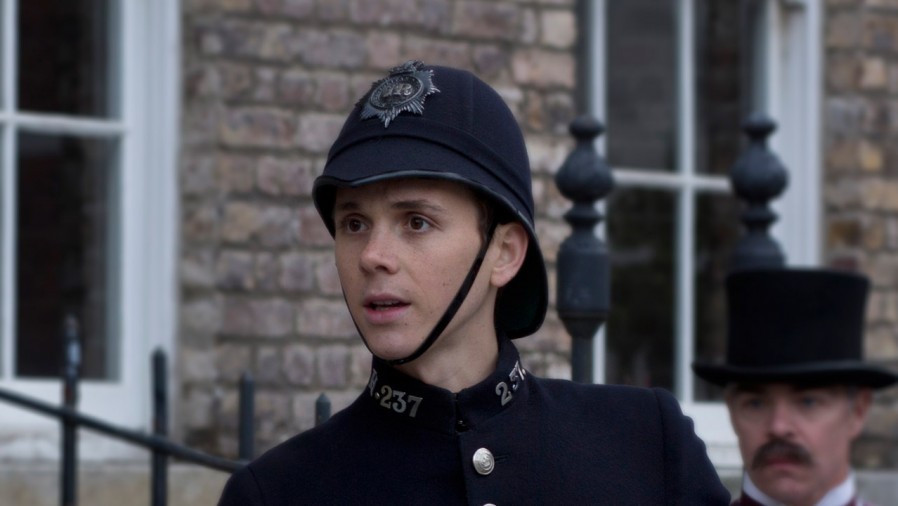Will the reader please cast their eye over the following lines, and see if they can discover anything harmful in them?
EXT. OXFORD COLLEGE. QUAD – DAY
The topless towers of Oxonium. Not a cloud to spoil the view.
TILT DOWN to BIRD’S EYE VIEW – wet flagstones… rain.
Coloured umbrellas pass below. A song and dance number begins. An ‘Outside Broadcast’ for a ‘Light Entertainment Special’ featuring MIMI, a chanteuse. HUGE STYROFOAM LETTERS spell out her name. DANCERS in coloured RAIN GEAR splash their way around the quad as…
MIMI: Like summer tempests came my tears, love, when I learned you’d been untrue. But after rain must come a rainbow. So, until then here’s what I’ll do…
PUNCH, BROTHERS, PUNCH!
(or Les infortunes de la vertu)
An exclusive ENDEAVOUR interview
Composed and conducted by Damian Michael Barcroft
Lyrics by Russell Lewis
~~~
With thanks to Lorenz Milton Hart and Richard Charles Rogers
& Matthew Slater for the images of RAK Studios
~
DAMIAN: I remember the day well and, of course, that bloody song – talk about involuntary musical imagery! And good God, wasn’t it hot?
RUSS: Extremely. The dancers in their plastic macs, sou’westers and good quality rubber boots had my sympathy. As did Sharlette – our wonderful vocalist. But yes – perhaps our most blisteringly hot shooting day since we began in 2011.
 DAMIAN: Aside from Tiger-gate, was opening an episode of Endeavour with a pop song and dance routine one of the most bold and surprising creative decisions thus far?
DAMIAN: Aside from Tiger-gate, was opening an episode of Endeavour with a pop song and dance routine one of the most bold and surprising creative decisions thus far?
RUSS: Ha! Always with the tiger. It wasn’t for me. Like Mister Walken – I’m a hoofer at heart. The sequence began as a salute to Les Parapluies de Cherbourg, and evolved from there.
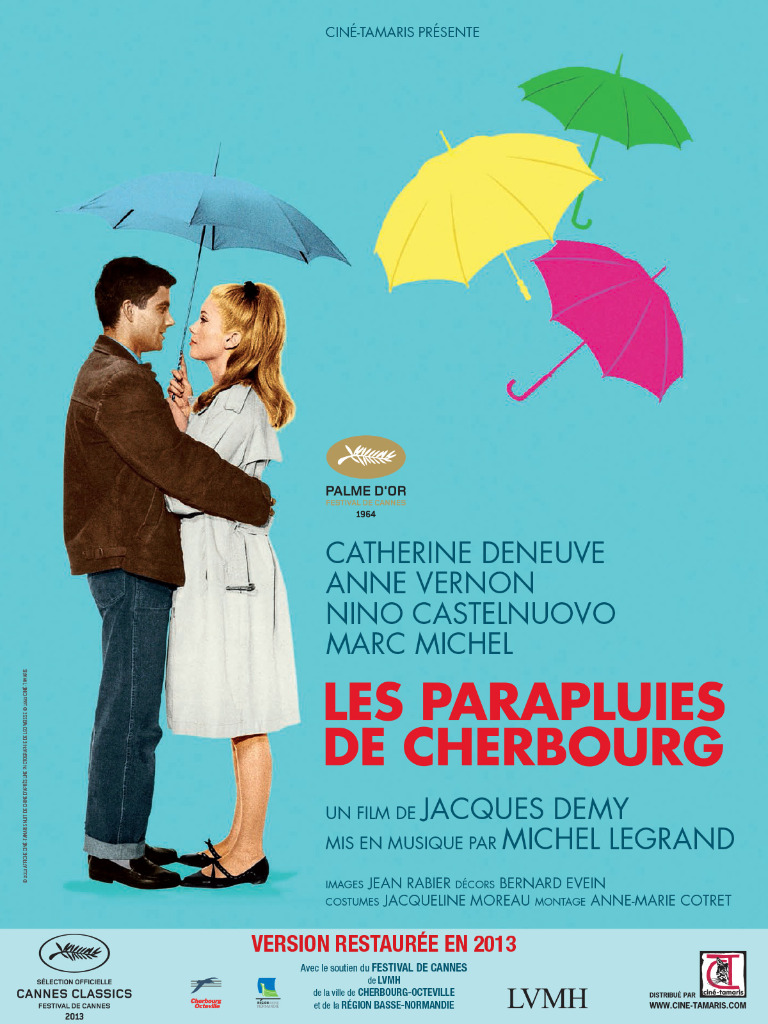 DAMIAN: I’ve said this before but you’re a very modest fellow, often frustratingly so for the purposes of these interviews, but let us simply assume, for the benefit of this piece, that you are indeed a VERY accomplished and successful screenwriter. The songs you wrote for CANTICLE, particularly ‘Make Believe’, were extremely catchy and, if we didn’t know better, genuinely sounded like a popular hit from the period. So, at what point did you feel confident as a lyricist and discover these hidden musical talents?
DAMIAN: I’ve said this before but you’re a very modest fellow, often frustratingly so for the purposes of these interviews, but let us simply assume, for the benefit of this piece, that you are indeed a VERY accomplished and successful screenwriter. The songs you wrote for CANTICLE, particularly ‘Make Believe’, were extremely catchy and, if we didn’t know better, genuinely sounded like a popular hit from the period. So, at what point did you feel confident as a lyricist and discover these hidden musical talents?
RUSS: Well – like the man said, I’ve a lot to be modest about. As a youth I used to weep in Rod Argent’s Keyboard Shop on Denmark Street. The usual teenage thing – bands; song-writing; colour me Les McQueen. That particular creative muscle hasn’t been exercised for a long time, but if one has any facility for that sort of thing – it’s a bit like riding a bike. And, of course, I was very fortunate to have Matt Slater on hand to do the heavy lifting.
DAMIAN: Are you familiar with another song entitled ‘Make Beileve’ from Show Boat?
RUSS: I haven’t seen Show Boat for decades. I landed on that for a title as it was a massive hidden clue and a pointer towards the dangerous delusion at the heart of the matter.
DAMIAN: Wouldn’t it have been a bit naff and possibly even embarrassing if the songs weren’t up to scratch, and if that had been the case, would you have had someone else rewrite the material or perhaps scrap it all together?
RUSS: Seeing as much of the story depended on a credible soundtrack, I can’t imagine we’d have scrapped it. We just had to apply ourselves.
DAMIAN: Matthew told me you wrote some sections of the song in the script but then he asked you to write more verses to help him complete the music which you both did in about thirty minutes? Thirty minutes! This can’t be true can it?
RUSS: I think it was about that. We were clearly dragging our feet that day.
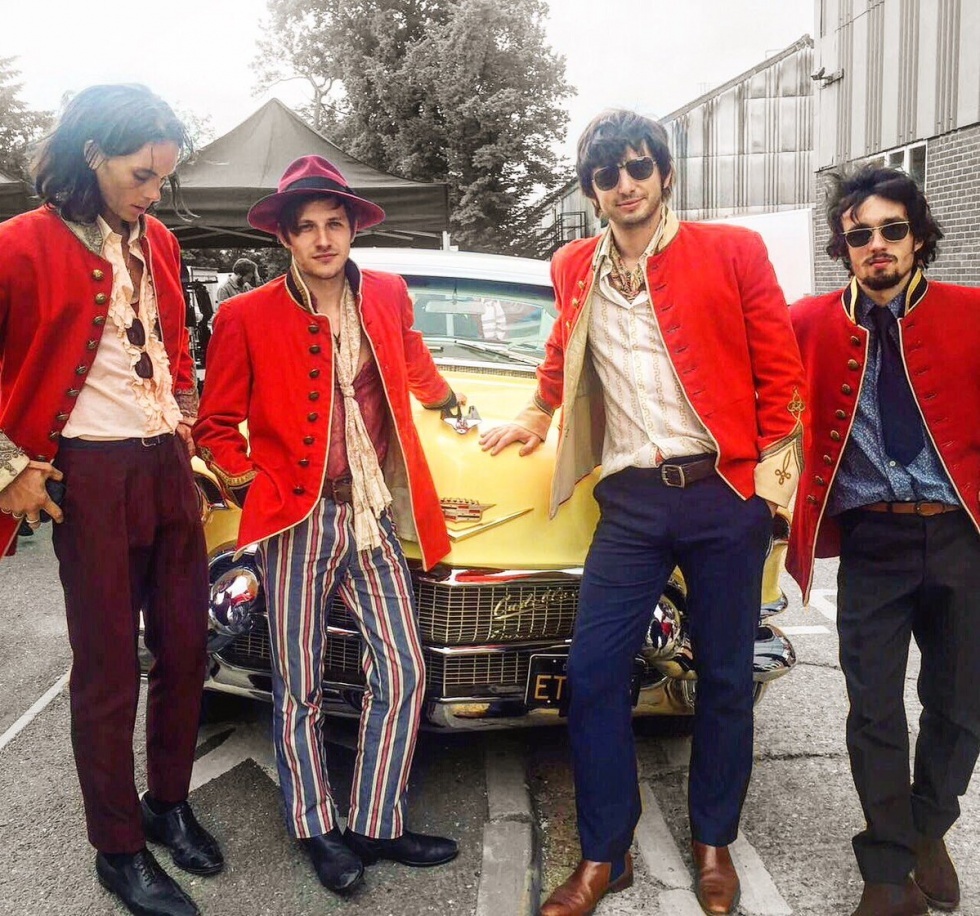 DAMIAN: And is it really true that two actors during one of the playback scenes were trying to Google one of the songs to see who originally wrote it back in the sixties?
DAMIAN: And is it really true that two actors during one of the playback scenes were trying to Google one of the songs to see who originally wrote it back in the sixties?
RUSS: I did hear that this was the case.
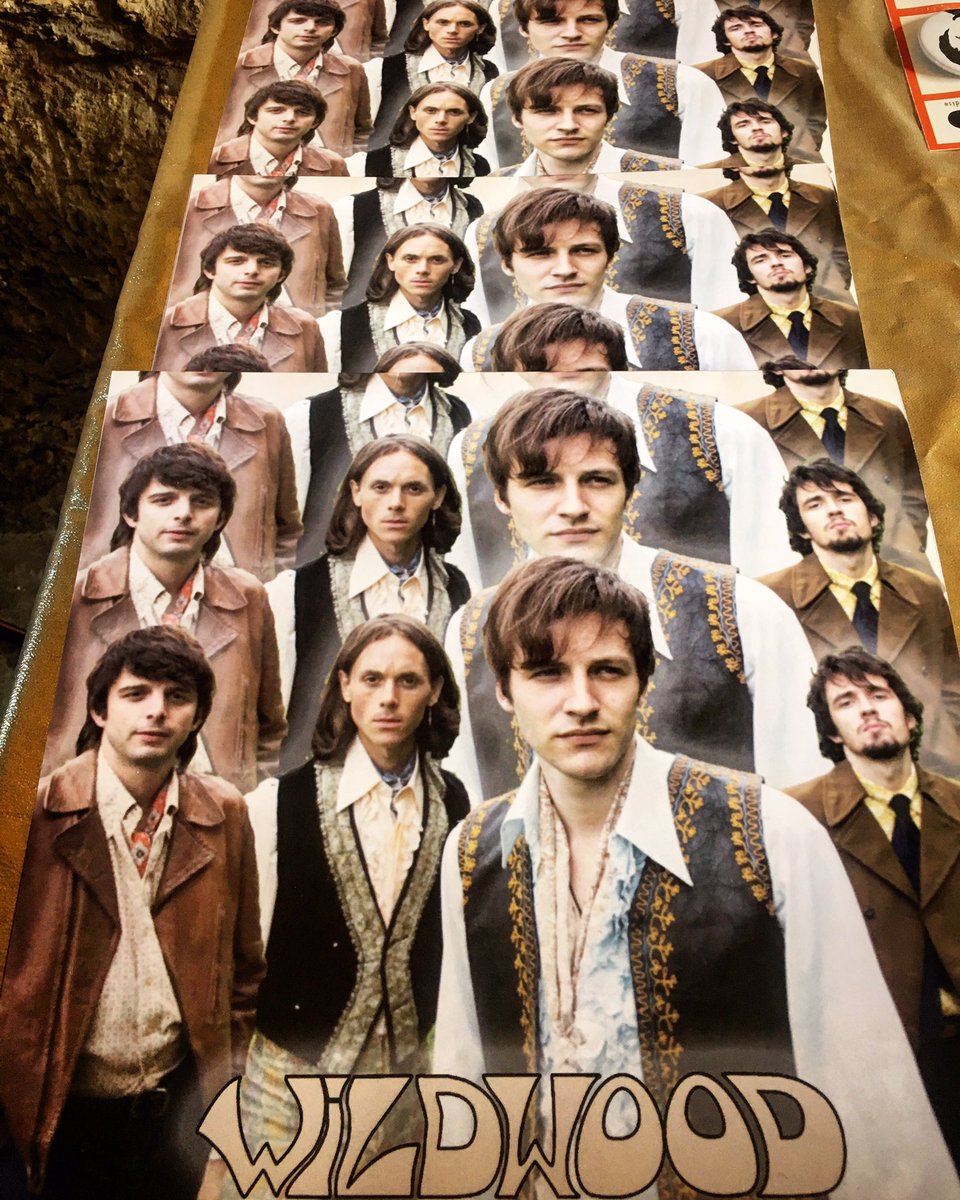 DAMIAN: You visited the recording of the songs at RAK Studios, what was it like to hear your lyrics performed alongside a rhythm section, brass and strings?
DAMIAN: You visited the recording of the songs at RAK Studios, what was it like to hear your lyrics performed alongside a rhythm section, brass and strings?
RUSS: Enormous fun. Like Abbey Road, it’s a place with an incredible history. So – hugely exciting. The place was packed. Sharlette; the boys from The Wildwood; Shaun came down; Helen Ziegler [producer]; Michael Lennox, the Director. And I was there with my son James. All of us cluttering up the control room – getting under the feet of the engineers, &c. It was a very special day. And in the middle of all the madness was Matt Slater – keeping his head and getting on with business. It was a privilege to see him working, as always. Whatever madness we’ve thrown at him over the last couple of series, he never fails to deliver all we’ve asked for, and always a great deal more besides.
DAMIAN: Did you celebrate with Rum, Scotch and Coke?
RUSS: I would refer you to Endeavour’s opening line in First Bus to Woodstock.
DAMIAN: In addition to Tony Hancock and those bloody Carry On films, almost every set of our interviews contain some mention of The Beatles. Can you remember when they split up and were you one of those fans who retreated to their bedroom in tears?
RUSS: I would have been seven – so… unlikely.
DAMIAN: And what about when Zayn left One Direction?
RUSS: I’m still mourning Geri’s departure from the Spice Girls.
DAMIAN: Do you listen to much modern music and what was the last album you purchased?
RUSS: I listen to all sorts of things. iTunes tells me my last purchase was a movie soundtrack that was in heavy rotation during the writing of MUSE.
DAMIAN: The first few films including First Bus to Woodstock, Girl, Fugue and probably quite a few more since feature typewriters and very particular mention of typefaces (a Smith Corona Deluxe Electric typewriter and Elite Number 66 typeface in Canticle) is this yet another example of your curious fascinations?
RUSS: A writer’s pre-occupation. I started on type-writers. Rewrites were a particular treat. Change a word or a line – re-type the entire page.
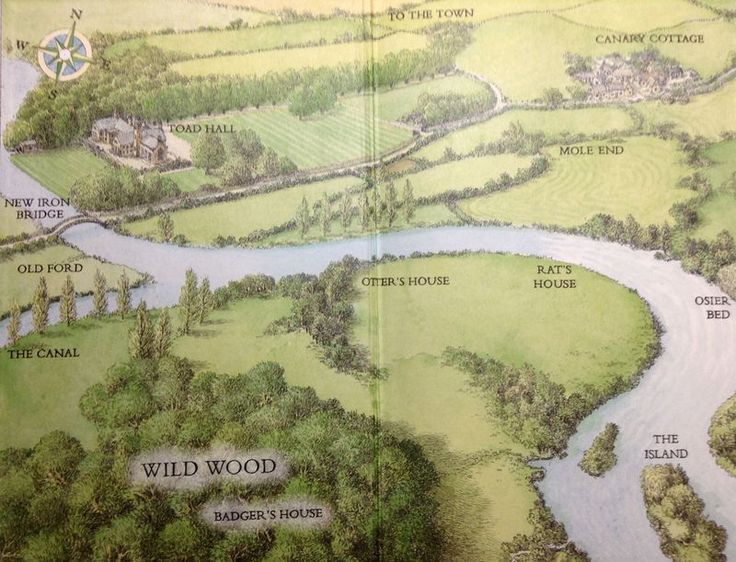 DAMIAN: Again, and far too many to mention them all, there are lots of literary and cultural references but I’m especially intrigued by connections to The Wind in the Willows which feature in CANTICLE. Is Kenneth Grahame’s classic a particular favourite?
DAMIAN: Again, and far too many to mention them all, there are lots of literary and cultural references but I’m especially intrigued by connections to The Wind in the Willows which feature in CANTICLE. Is Kenneth Grahame’s classic a particular favourite?
RUSS: Published only six years before all the old certainties were blown to hell by the Great War, there’s something about its prelapsarian idyll that seems to connect with the back to The Garden innocence of the flower-children.
 And the tragic death of Alistair, a.k.a. ‘Mouse’, the Grahames’ only child, while up at Oxford, to whom The Wind in the Willows had first been told as a bedtime story, lends another layer of connection. It doesn’t take much detective work to get from there to The Piper At the Gates of Dawn.
And the tragic death of Alistair, a.k.a. ‘Mouse’, the Grahames’ only child, while up at Oxford, to whom The Wind in the Willows had first been told as a bedtime story, lends another layer of connection. It doesn’t take much detective work to get from there to The Piper At the Gates of Dawn.
 DAMIAN: And there’s some interesting narrative parallels with Cherubim and Seraphim from the original series isn’t there?
DAMIAN: And there’s some interesting narrative parallels with Cherubim and Seraphim from the original series isn’t there?
RUSS: Very much so. I think Morse’s comment to Lewis about his never having taken recreational drugs still stands. Endeavour was poisoned with hallucinogens. I draw a distinction.
DAMIAN: And finally before we move on from the references and nods, are you an avaricious consumer of the Marquis de Sade’s work?
RUSS: Essential bedtime reading.
DAMIAN: Let’s now talk about some of the characters. Given his dislike for hippies and Germans, the fact that he won’t even hug his own son in public as he leaves for the army and generally displays certain personality characteristics that are probably out of touch even in the sixties, isn’t it somewhat surprising to find that Thursday has such liberal views on recreational drugs and homosexuality?
RUSS: It didn’t strike me as particularly liberal. He states that he smoked hash as a fact, and that it didn’t do much for him. That’s hardly an endorsement. He upholds the law that he’s obliged to uphold. I think the war probably put a lot of things into perspective for him. When you’ve looked death in the eye, you tend not to sweat over the small stuff. Judge not.
DAMIAN: Thursday has a difference of opinion on homosexulaity in an unfilmed scene in which Strange says that ‘poofs’ are ‘not right’ and ‘neither use nor ornament’, to which Thursday replies ‘We had one in the platoon. North Africa. Harris. Bravest man I ever knew… Sniper [shot him at] Second El Alamein. I closed his eyes. Brave to the last. If he’d made it back to Civvy Street, I might’ve had cause to nick him. And that can’t be right. Comes down to it, we all bleed red’. Is it realistic that a soldier would have been openly gay during WW2 or is this something the chap simply told Thursday in confidence?
RUSS: If you’ll forgive me – there’s a danger of overthinking this. I can’t imagine it was a conversation that ever took place. There’s nothing new about don’t ask, don’t tell. It was an assumption made, I’m sure, based upon Harris’s demeanour – as right or wrong as that might seem to us now. Had Thursday served with… I don’t know… our own Charles Highbank – the window dresser from Burridges, played by best beloved Adrian Schiller – it’s somewhat unlikely Thursday would have mistaken him for a raging heterosexual. There’s really no more to it than that. But I think the important thing here is that such experiences – living cheek by jowl with a man, sharing the same foxhole – would have made Thursday, and others, question the orthodoxy – and indeed the law – that invited – if not required – them to view such men with suspicion and contempt.
DAMIAN: Were Strange’s comments cut for fear the audience might find them offensive?
RUSS: Never. No – for length.
DAMIAN: Is there sometimes a certain danger that television is rewriting history and is it convincing that most of the main characters of period dramas happen to share the contemporary views of the people who write them?
RUSS: Which is why I had Strange express the views I did. Had it made the cut, it would have given some of the more predictable period context to offset Thursday’s view.
DAMIAN: I’m not sure if you’re allowed to say but to what extent was Mrs. Pettybon based on Mary Whitehouse?
RUSS: Mrs.Pettybon was a composite – much like The Wildwood. The inspiration was Edna Welthorpe (Mrs) – Joe Orton’s alter-ego – guardian of public morals — created in the 50s long before Mrs.W came to public prominence. What we were looking to present was a type, of which Mrs.Whitehouse was perhaps the most well known – but she was certainly not alone in her crusading. It was an attitude one was holding up for inspection, rather than an individual. As I’ve possibly mentioned before, ‘67 saw the death of Orton, Brian Epstein and Joe Meek. This, together with the partial decriminalisation of homosexuality, as a result of the Sexual Offences Act 1967, was in my mind when I started developing the story.
The packaging of a certain kind of manufactured rock and roll band – the management keeping wives and girlfriends out of the picture, so as not to puncture the myth of their potential romantic availability to the young fandom, lest it affect record sales, &c, was also a building block. The morality of that deceit seemed worth examining – just as much as the moral soapboxing of Mrs.Pettybon.
You know – we’re in the whodunit business, and the notion of a bigger, darker – at least for the period – secret, beyond that being presented on the surface, is key.
But the other big jumping off point was in thinking about whether it would be possible to murder someone without killing them. If you change their personality, their cognitive abilities, irreversibly – say through spiking them with hallucinogens – it could be argued that the person they were beforehand has effectively been – for want of a better term – ‘murdered’. The period certainly contained enough ‘acid casualties’ to make it something worth exploring.
 DAMIAN: Were the OCD characteristics displayed by Mrs. Pettybon such as the extreme scrubbing of her hands a bit much and didn’t she run a slight risk of becoming something of religious caricature?
DAMIAN: Were the OCD characteristics displayed by Mrs. Pettybon such as the extreme scrubbing of her hands a bit much and didn’t she run a slight risk of becoming something of religious caricature?
RUSS: Out, damned spot! She did drive her husband to suicide – so she had something to be guilty about. How does one depict someone who is a religious caricature? The point is that she wasn’t genuinely religious at all. The dissonance between her professed faith and her eagerness to cast the first stone seemed to me vast and obvious. There was an exchange which we lost from the final cut between Mrs.P and the band’s manager after their appearance on Julian Calendar’s show. It seemed to my mind to sum up what she was about.
MRS.PETTYBON: Is our car here?
ENDEAVOUR: Yes, yes, it’s, er… A taxi.
MRS.PETTYBON: What happened to the nice car that brought us?
RALPH: That’s showbusiness, Mrs.Pettybon.
MRS.PETTYBON: I’m not in showbusiness.
RALPH: Actually, dear, you are. Boys.
RALPH loads his charges into the TAXI.
She was a fame hungry charlatan who would turn up to the opening of an envelope. That was the point. The only appropriate response is ridicule and derision.
 DAMIAN: Her daughter, Bettina, is yet another character who has something of a crush on Endeavour, what do you think makes him so attractive to women – especially those who might best be described as vulnerable or troubled?
DAMIAN: Her daughter, Bettina, is yet another character who has something of a crush on Endeavour, what do you think makes him so attractive to women – especially those who might best be described as vulnerable or troubled?
RUSS: That he looks remarkably like Shaun Evans possibly has something to do with it.
 DAMIAN: Why were references to Bright’s spasms of pain deleted from this and the previous film, surely their inclusion would have made the events of the next film more dramatic and less out of the blue?
DAMIAN: Why were references to Bright’s spasms of pain deleted from this and the previous film, surely their inclusion would have made the events of the next film more dramatic and less out of the blue?
RUSS: Length – again – very likely. What can I tell you?
DAMIAN: There were two beautiful moments that appeared in the script but sadly didn’t make it on film as originally written: the first has Thursday hold the hallucinating Endeavour gently rocking him back and forth as he calls out ‘Fred?’, to which Thursday replies: ‘That’s right, son. That’s right. It’s Fred. You’re safe now. I’ve got you.’ I’m sure this would have elevated an already great scene to one of the most touching in the entire series so why cut it?
RUSS: On the day, that was the way it went on the floor.
DAMIAN: The second is the corned beef scene in the hospital at the end of the film which originally began with the following ‘ENDEAVOUR – a whiter shade of pale. Somewhere between this world and the next. An angel’s wings brush his cheek. A pair of soft lips find his own’ and Joan says off screen ‘Look after yourself, Morse.’ Again, this is beautiful so why lose it?
RUSS: As with the previous. ‘Ask me no more…’
DAMIAN: So, while CANTICLE revealed your flair for lyrics, what can you tell us about CARTOUCHE and what new tricks or talents might you still have hidden up your sleeve?
RUSS: Hmm. I don’t know about new tricks. Just an old dog’s selection of fire-sale novelties, gee-gaws and bagatelles from a well-travelled sample case of deceit and legerdemain. Umm… What can I tell you about CARTOUCHE… Tonight’s late-night double-feature examines – amongst other things — the fading grandeur of the local flea-pit. Other aspects of the story were a sobering reminder that all too often the more things change, the more they stay the same. So… Two for the Circle. And don’t forget your popcorn.
DAMIAN: Will there be any more singing and dancing in this series?
RUSS: Some.
~
